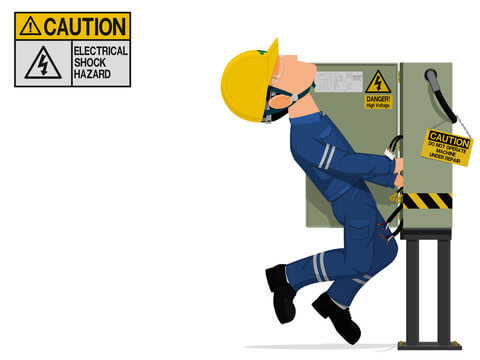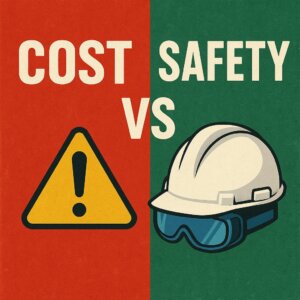Introduction
Electrical shocks rank among the top five hazards on construction sites. According to industry data, 80% of onsite electrical accidents stem from poorly managed temporary power systems and inadequate personal protection. Aligned with the latest 2025 standards (JGJ/T46-2024), this guide explores actionable strategies to mitigate risks through insulating PPE and science-driven temporary electrical management, empowering teams to build safer worksites.
Part 1: Understanding Electrical Shock Risks
1. High-Risk Scenarios
- Faulty Temporary Wiring: Aging cables, improper elevation (e.g., exposed metal fasteners), and damaged insulation.
- Inadequate Grounding: Equipment like welders or mixers lacking TN-S grounding, failing to trigger automatic power cuts during leaks.
- Environmental Hazards: Wet conditions (e.g., trenches, rainy seasons) degrading insulation.
- Human Error: Untrained workers handling live circuits or bypassing safety protocols.
2. Critical Data
- 90% Preventable: Ministry of Housing data (2024) shows compliant practices reduce shock incidents to <0.1%.
Part 2: Insulating PPE – The Last Line of Defense
1. Essential PPE Checklist
| Protection Area | Required PPE | Function |
|---|---|---|
| Head | Insulating Safety Helmet | Impact resistance + 1,000V+ insulation |
| Hands | Voltage-Resistant Gloves (10kV+) | Isolate live equipment handling |
| Feet | Anti-Puncture Insulated Boots | 5kV+ insulation, moisture-proof soles |
| Body | Flame-Retardant Coveralls | Arc flash protection + high visibility |
2. Specialized PPE for Extreme Conditions
- Elevated Live Work: Insulated harnesses + anti-slip climbers.
- Confined Spaces: Explosion-proof headlamps + gas detectors.
Part 3: Temporary Electrical Management – Compliance in Action
1. System Upgrades
- Three-Level Distribution & Two-Level Protection: Main → Sub → Device-Specific Panels, all with leakage circuit breakers.
- “One Machine, One Switch, One Box”: Strict isolation; violations now incur penalties under 2025 regulations.
- Weekly Inspections: 100% coverage, grounding resistance ≤4Ω.
2. Operational Best Practices
- Cable Installation:
- Elevated: Minimum 2.5m height.
- Buried: 0.7m depth, steel-pipe shielding at crossings.
- Panel Safety:
- Orange enclosures with locks + weatherproof covers.
- Bottom-entry wiring only; side holes prohibited.
- Tower Crane Power: Dedicated circuits + independent breakers (2025 mandate).
Part 4: Proactive Risk Control Toolkit
1. Self-Audit Checklist
- All electricians certified; no cross-level operations.
- ≤24V safety voltage in wet zones.
- Quarterly emergency drills with 100% participation.
2. Tech-Driven Solutions
- Smart Monitoring: Real-time leakage/temperature alerts via IoT sensors.
- Biometric Access: Fingerprint-enabled panels to prevent unauthorized use.
Part 5: Emergency Response – The Golden 4-Minute Protocol
- Cut Power: Use insulated tools; never touch victims directly.
- CPR: 30 chest compressions + 2 breaths if unresponsive.
- Reporting: Notify authorities within 1 hour; preserve scene evidence.
Conclusion
Effective shock prevention requires technology, compliance, and vigilance:
- Technology: Adopt smart PPE and monitoring per JGJ/T46-2024.
- Compliance: Enforce three-level power distribution and PPE policies.
- Vigilance: Train 100% of staff; simulate high-risk scenarios regularly.








